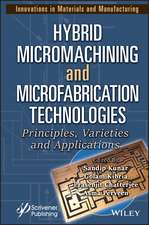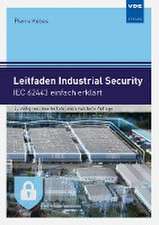Thermal Systems Design: Fundamentals and Projects, Second Edition
Autor RJ Martinen Limba Engleză Hardback – 10 mar 2022
Preț: 778.10 lei
Preț vechi: 1065.90 lei
-27% Nou
148.91€ • 154.68$ • 123.69£
Carte tipărită la comandă
Livrare economică 03-17 februarie 25
Specificații
ISBN-10: 1119803470
Pagini: 560
Dimensiuni: 178 x 254 x 33 mm
Greutate: 1.18 kg
Ediția:2nd Edition
Editura: Wiley
Locul publicării:Hoboken, United States
Notă biografică
Richard J. Martin, PhD, PE, is the President and Principal Engineer of Martin Thermal Engineering, a mechanical and thermal consulting firm that specializes in system failure analysis and engineering safety, and is an Adjunct Lecturer at California Polytechnic State University - San Luis Obispo where he teaches Air Pollution and Programming Methods in Engineering and an Adjunct Lecturer at Santa Clara University where he teaches Thermal Systems Design and Heat Transfer. He has previously taught at the University of Southern California, California Polytechnic State University - Pomona, and California Baptist University.
Descriere
Discover a project-based approach to thermal systems design In the newly revised Second Edition of Thermal Systems Design: Fundamentals and Projects, accomplished engineer and educator Dr. Richard J. Martin offers senior undergraduate and graduate students an insightful exposure to real-world design projects. The author delivers a brief review of the fundamental laws of thermodynamics, fluid mechanics, heat transfer, and combustion theory before moving on to a more expansive discussion of how to apply these theories to design common thermal systems, like burners, boilers, combustion turbines, heat pumps, and refrigeration systems. The book includes design prompts for 14 real-world projects, teaching students and readers how to approach tasks like preparing Process Flow Diagrams and computing the thermodynamic details necessary to describe the states designated therein. Readers will learn to size pipes, ducts, and major equipment and to prepare Piping and Instrumentation Diagrams that contain the instruments, valves and control loops needed for automatic functioning of the system. The Second Edition offers an updated look at the pedagogy of conservation equations, new examples of fuel-rich combustion, and a new summary of techniques to mitigate against thermal expansion and shock. Readers will also enjoy: * Thorough introductions to thermodynamics, fluid mechanics, and heat transfer, including topics like the thermodynamics of state, flow in porous media, and radiant exchange. * A broad exploration of combustion fundamentals, including pollutant formation and control, combustion safety, and simple tools for computing thermochemical equilibrium in fuel-rich combustion gases. * Practical discussions of process flow diagrams, including intelligent CAD, equipment, process lines, valves and instruments, and non-engineering items * In-depth examinations of advanced thermodynamics, including customized functions to compute thermodynamic properties of air, combustion products, water/steam, and ammonia right in the user's Excel workbook Perfect for students and instructors in Thermal Systems Design courses at the senior undergraduate and graduate levels, Thermal Systems Design: Fundamentals and Projects is also a must-read resource for mechanical and chemical engineering practitioners who are seeking to extend their engineering know-how to a wide range of unfamiliar thermal systems.



















